

Featured Article of the Month
Showcasing Japan in Singapore - Interview With Clement Onn
|
In this edition of Kizuna Story, JCC speaks to Clement Onn, Senior Curator (Asian Export Art & Peranakan) at the Asian Civilisations Museum (ACM) to learn more about his close ties to Japan.
Tell us more about the Japanese-related projects you are involved with here, and how you have been promoting Japan in Singapore? At ACM, I am looking after the Maritime Trade, Court & Company, and Christian art galleries. These galleries explore international trading networks across various Asian port cities between 16th to early 20th century and the spread of Christianity in Asia. Japan, specifically Nagasaki, Kyushu region, played an important role in this narrative. Nagasaki, as a cosmopolitan trading port city, is a predecessor of Singapore. There were many artistic and cultural influences from Europe, China, Korea, India, and Southeast Asia. Foreign missionaries also made their base in Kyushu and spread the Catholic religion. Today some selected churches and Christian sites in Nagasaki are recognised under the UNESCO World Heritage List since 2018. These are my area of research and I am trying to convey this story within ACM galleries. I am also fortunate to be involved in curating the current exhibition, Life in Edo X Russel Wong in Kyoto. Through the introduction of JCC, we got in touch with Kobe Shimbun, who was trying to organise a travelling exhibition of ukiyo-e (Japanese woodblock prints) to Singapore. The collection belongs to Mr Nakau Ei, a Kobe businessman who owns one of the largest ukiyo-e collections in the world. The initial proposal was to hold an exhibition of 5 woodblock print artists – namely, Utamaro, Sharaku, Hokusai, Hiroshige, and Kuniyoshi. We were worried if an exhibition that only focus on master artists – their lives and networks – would connect or be of interest to our wider Singaporean audience. After several meetings, both Kobe Shimbun and ACM decided to change the curatorial focus so that we could engage on easy-to-relate themes like travel, beauty, pets, food, gardening, and seasonal festivals. We hope that by exploring these familiar activities, we can provide a glimpse into the rich and colourful world of Edo period Japan (1603-1868). |
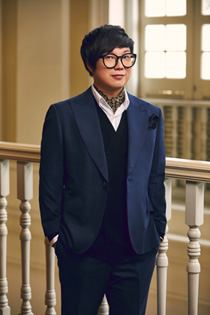 Clement Onn 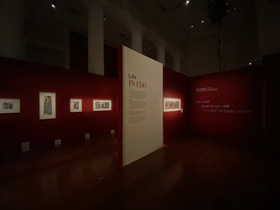 Life in Edo 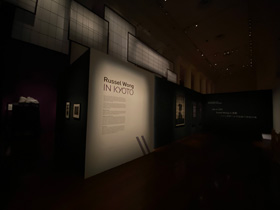 Russel Wong in Kyoto |
|
At the same time, while we are planning on the possibility to take the woodblock print show from Kobe, Japan, we heard of Russel Wong and his documentation work of the geiko/maiko community in Kyoto. At the museum, we made a further decision to combine traditional Edo period woodblock prints with contemporary photography through the lens of a Singaporean photographer. This union of the two mediums became a unique exhibition. As images, both ukiyo-e prints and photographs remind us of the past and present of Japan. Many traditions and practices of Edo-period Japan are still celebrated, if not officially observed, and those practices influence modern life in subtle ways. Some of the famous travel spots and important landmarks remain untainted but have undergone preservation and upgrading to allow better accessibility for the public. These sensory experiences are what draw most travelers today to Japan. Those who love Japan can still appreciate the customs and trends captured in ukiyo-e prints – viewing of cherry blossoms, witnessing fireworks in the summer, cultivating bonsai and flowers, or dining on regional specialties. One wonders if by looking at the ukiyo-e prints and standing on the same spot today, would we gaze upon the view with the same emotions as the people of Edo once did?
What do you like about Japan? What is your favourite place or food in Japan? There are many things I love about Japan and many of these are linked to the themes we explore in the exhibition: for example, the history of Japan; travelling around regional prefectures; getting to taste local delicacies; etc, etc. Most important of all, is to be able to visit my family and close friends in Japan. I feel at home in Kansai and Kyushu regions but throughout Japan there is a lot to offer and places I have yet to visit. Perhaps I would fancy a trip to Sendai, Miyagi Prefecture or Okinawa next, when travel allows. My favourite food are ayu no shioyaki (grilled sweetfish) and mitarashi dango. How did you become interested in Japanese culture, Japanese language, and Japan? When I was younger, Japanese manga and animations have a huge impact in me. This is followed by the global popularity of J-rock and J-dramas in the 90s. Being exposed to these popular cultures is the beginning of my interest in Japan. I started learning Japanese language at Singapore Polytechnic as an elective. After completing my National Service, I went to Australia to pursue my degree in foreign languages and applied linguistics, majoring in Japanese and Italian languages, at Griffith University. I continued to pursue these two languages during my postgraduate studies on Museum studies at the School of English, Media Studies and Art History at University of Queensland. |
|
How have you incorporated Japanese culture in your daily life and work?
I learnt to play igo (commonly known as the game of Go) in Japan and ever since then, I fell in love with it. Igo, also known as weiqi, originates from China, and it spreads to Korea (known as baduk) and Japan. Today it is very much an international game. Much of the rules and traditions we observed today, stemmed from a structure that was established in Japan who preserved much of its history and was crucial in its development to the modern game. Both the game of Go and Japanese culture that comes with the game have deeply influenced my life. Many things in Go could be a mirror to one’s daily life and work. From the rituals and etiquette observed in the game, reminds me on the importance of being polite and graceful – whatever is the outcome of the game. Like most games, the outcome is important between the players, however the process throughout the game is also extremely introspective – it allows one to better understand oneself and to understand your opponent’s intention and to make a better respond. It enables us to learn to be a better negotiator, a good listener and to have a bigger picture view of things and all these applies to our daily life and at work. |
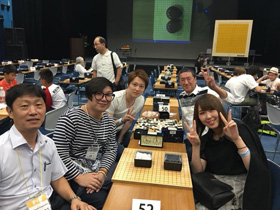 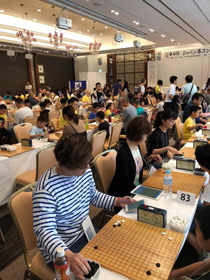 |
|
How have you been influenced by Japanese culture?
一期一会 Ichi-go ichi-e (literal translation – ‘one time, one meeting’) describes a cultural concept of treasuring the unrepeatable nature of a moment. More commonly described as a ‘once-in-a-lifetime experience’. It reminds me to cherish any gathering that I may have the opportunity to take part in. This Japanese idiom resonates with another concept that I am very taken with – memento mori (remember that you [have to] die) which signified the impermanence of human life. We only live once so let’s cherish all our encounters and experiences in the best possible manner. Any message or hope towards the relationship between Japan and Singapore? In the year of SJ-55 and despite COVID-19 challenges, I am very fortunate to realise this exhibition with the trust of our Japanese counterparts (Kobe Shimbun and Mr Nakau Ei) and with the help of all my colleagues at the museum. I could only hope for a better and safer future for more travel opportunities between Singapore and Japan so that we could all visit our friends and relatives without any fear. |
* All photos used in this article are provided by the author / © Clement Onn
|
Japan Creative Centre 4 Nassim Road, Singapore 258372 +65 6737 0434 / jcc@sn.mofa.go.jp https://www.sg.emb-japan.go.jp/JCC/ Nearest parking at Orchard Hotel & Delphi Orchard |
 |